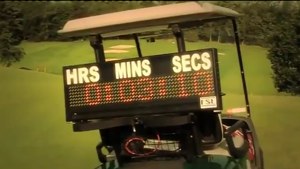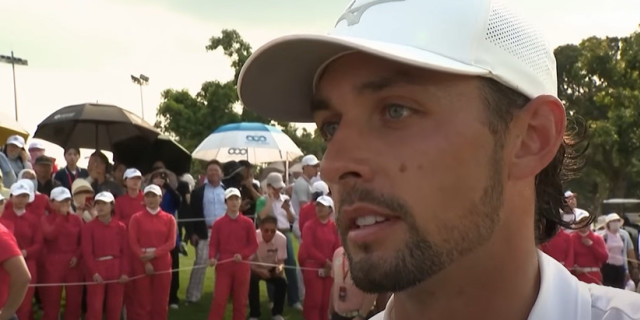
Slow Play Weekly Feature: Kwik Golf
Continuing our features focused on 'What is the Most Effective Way to Combat Slow Play in Golf?' Nick speaks to with Clive Metcalf, CEO of Kwik Golf.
 The vast majority of readers will be totally unaware of the concept that is Kwik Golf. Whilst it was not born directly out of a fundamental desire to improve pace of play, the connotations in that sphere could be huge.
The vast majority of readers will be totally unaware of the concept that is Kwik Golf. Whilst it was not born directly out of a fundamental desire to improve pace of play, the connotations in that sphere could be huge.
Kwik Golf is yet another example of the recognition of the link between time spent playing golf, and enjoyment. If the idea is properly harnessed, and golfing authorities are prepared to take a chance, Kwik Golf could have more of an effect on slow play than any other discernable policy or proposition.
Featured Content
What’s more, it is a concept that targets the next generation of golfers, as well as those already embroiled in the game. It is as much about encouraging youngsters to play the game as it is about pace of play. The interesting thing is that there is a direct proportion between the two.
I spoke to Clive Metcalf, CEO of Kwik Golf, to find out more.
What exactly is Kwik Golf, and how was the idea born?
The man behind the original idea is former businessman Marshall Capel. One day, he was watching 20:20 cricket and noted the excitement and how it captivated the audience. From that moment onwards, he was determined to come up with ‘golf’s answer to 20:20.’
There are two different versions of Kwik Golf, one for children, and one for adults and those that are more competent. The junior game involves three moveable flags and targets, with children using soft balls to shoot at the target. The adult game is played over six holes, the beauty being that the six holes can be any specified holes on any golf course. Teams of two play simultaneously, and a score is achieved based on a combination between strokes taken and time spent playing six holes. A round of Kwik Golf normally takes 45 minutes.
Why have I never heard of Kwik Golf?
Clive and Marshall have decided to focus predominantly on the States. They feel it can be more easily scaled towards the American market. That is not to say, however, that America is the sole recipient of their focus. What struck me most, aside from the brilliant simplicity of the idea, was how much faith Clive had in the concept. Mr Metcalf spoke about establishment in America being the pre-cursor to expansion into “emerging golf markets” such as China and South Korea, as well as implementation in the United Kingdom.
It is easy to understand why. In 2011, Kwik Golf was named as a finalist in the prestigious ‘One Small Step’ competition run by Barclays. Even though it missed out on the £50,000 first prize, “it was never going to make a massive difference”, and only served to give the owners more faith in their idea and more determination to facilitate its widespread implementation.
How are things progressing in America?
Mr Metcalf hopes to crack the American market “within the next twelve months.” The co-creators took their idea to the highest authority, the PGA of America, and have seen some benefit from a determined effort to encourage mass golfing participation across the ages.
Kwik Golf is currently being officially trialled by the PGA of America, and has impressed officials such as Holly Taylor, Director of Learning and Development, and Ron Stepanek, Director of Player Development. The latter labelled the concept as one of the best things he’d seen to encourage youth participation in the sport, with the former affirming that the flag, targets and balls were the best pieces of kit that she had seen for children’s golf.
Fantastic idea
In January, Kwik Golf formed part of the schedule for an LPGA charity event, the Prader Willi Classic, where youngsters were paired with LPGA Professionals to play Kwik Golf at the PGA National Golf Course in Florida. It was extremely well received as a concept, with 97% of people saying that they would be prepared to pay to play Kwik Golf. Jane Broderick, Director of Golf Operations for the PGA National, even referred to it as “a game changer for golf.”
So why hasn’t it been implemented?
Naturally, my next task was to understand why Kwik Golf hadn’t been adopted by the PGA. The fact of the matter is that the PGA is a business, first and foremost, and in order to survive, businesses have to make money. Clive and Marshall are now in the process of attempting to prove that implementing Kwik Golf is economically viable. Clive put forth a very convincing argument about the potential to make money from Kwik Golf and, perhaps more significantly, the impact it could have on future generations. A generation of children brought up playing Kwik Golf will have quick play instilled in their psyche.
But how do we get the new generations to play golf? The pre-requisite to the economic success of Kwik Golf lies with the philanthropic nature of golf clubs. As Metcalf says, it is about “attracting kids and making money for golf.” It has to be in that order, though, because the business model relies on the relationship between the two.
The set-up
The cost of a Kwik Golf license is 1,600 dollars. Included in that price is a kit bag with three short hole targets, flags and soft balls. The idea is that the golf club takes the kit bag to a local school, thus giving exposure to both Kwik Golf and the traditional version of the game. Clive continues to tell me that if the 10,000 golf clubs in the PGA of America take the game to five local schools with 500 children combined, there will be 5,000,000 youngsters playing Kwik Golf. The advantage for the local golf club is that enjoyment and word of mouth will lead to traffic at the course in the last two hours of the day, which is when Kwik Golf is played.
By operating Kwik Golf in the last two hours of the day, revenues are maximised. 60 people can get round in two hours, but as an example, let’s take 40. 40 people at ten dollars each is $400 dollars a night, and that is before additional revenue from the bar and professional shop.
Ball in PGA’s court
At the end of the day, it comes down to the PGA of America’s interpretation of the results, as well as the above business plan transforming into reality. I sincerely hope it does, because I see a win-win situation, however you look at it. The cost of the license is miniscule compared to prospective profit; it brings a new, exciting concept to a new generation of golfers, as well as parents who will take their children to play, and it associates speed with golf.
The last thing we want is people running around a golf course when they make the transition from Kwik Golf to regular golf, but as Mr Metcalf says, “players brought up playing Kwik Golf will play faster.” If you are used to playing quickly against the clock you will take that mentality onto the golf course. It really is as simple as that. Clive and Marshall have advanced plans for the future, including a live running leaderboard and video streaming. Let’s hope they get the chance bring their many ideas to life. Your move, PGA of America.
More Slow play features:
- Read the part 1 introduction and analysis of the Pro Tours
- Read part 2 focused on Amateur Golf
- Club perspective - Westport Golf Club
Tags: slow play









